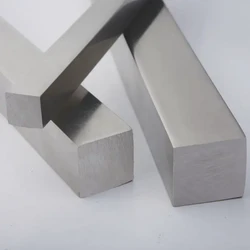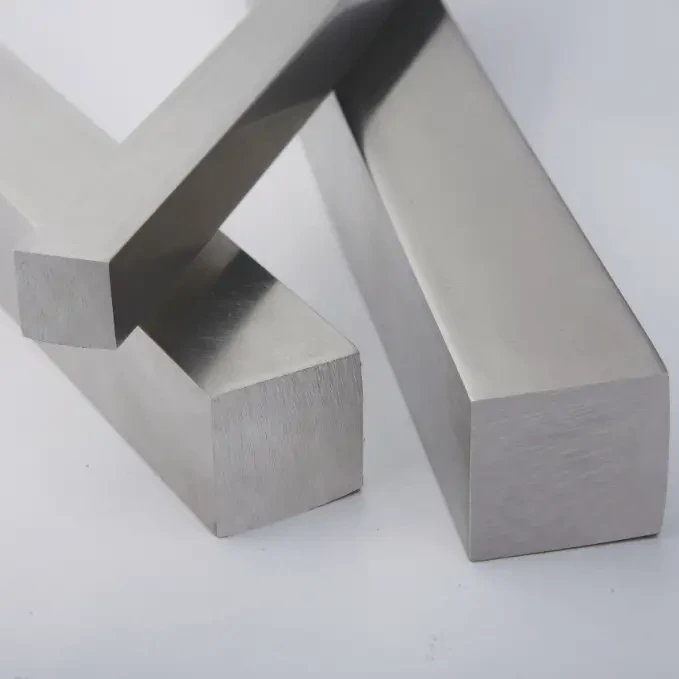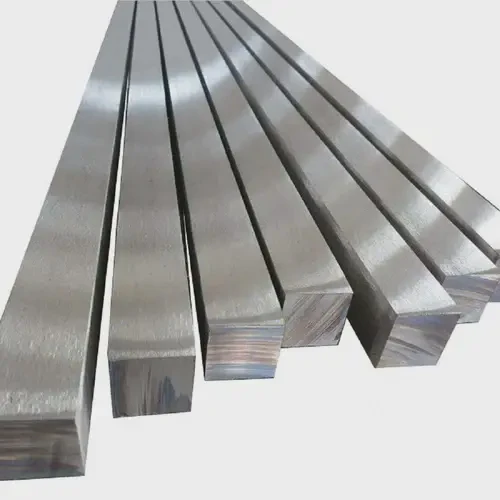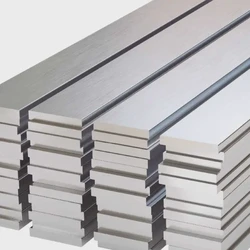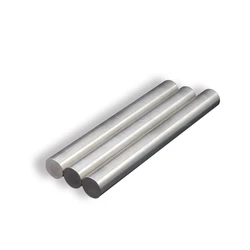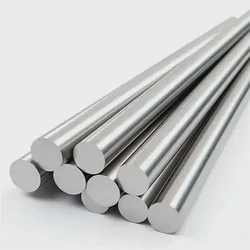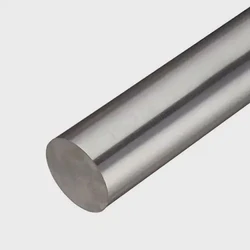Stainless Steel Square Bar
We offer Stainless Steel Square Bar and related grades with 100% factory direct pricing and free quotes available within 6 hours.
As a metal expert working in materials engineering, I often hear about the importance of stainless steel square bars in various industries. The stainless steel square bar is a versatile material widely used in construction, manufacturing, and even decorative design. Typically crafted from stainless steel alloys, these bars have a square cross-section and come in a range of sizes. Their strength, durability, resistance to corrosion, and aesthetic appeal make them ideal for numerous applications.
The global demand for stainless steel square bars continues to rise. By 2025, the market for stainless steel bars is expected to reach USD 15 billion, driven by robust industrial and construction sectors in countries like China, India, and the United States (source: MarketsandMarkets). Understanding the attributes, applications, and market trends of stainless steel square bars helps businesses and manufacturers optimize their use of this material.
1. What is Stainless Steel Square Bar?
A stainless steel square bar is a solid, square-shaped piece of stainless steel that is used for structural, mechanical, and decorative purposes. It is typically manufactured through hot rolling or cold drawing processes to achieve a high level of strength, surface finish, and dimensional accuracy.
Key Properties:
-
Corrosion Resistance: Stainless steel, due to its chromium content, forms a passive oxide layer that protects it from rust and other forms of corrosion.
-
Strength: Stainless steel square bars exhibit high tensile strength, making them suitable for demanding applications.
-
Versatility: Available in different grades (e.g., 304, 316, 410), each with distinct properties, stainless steel square bars are adaptable to various needs.
-
Finish: The bars are available in polished, brushed, or mill finish, allowing them to be used in decorative applications, especially in architectural designs.
Common Grades Used:
-
Grade 304: Known for excellent corrosion resistance and formability.
-
Grade 316: Offers superior resistance to chlorides and marine environments.
-
Grade 410: Provides high hardness and strength but has less corrosion resistance than 304 or 316.
2. Applications of Stainless Steel Square Bars
Stainless steel square bars are found in a wide range of applications across industries such as construction, automotive, aerospace, food processing, and even art and design. Here are some common applications:
2.1 Construction Industry
In construction, stainless steel square bars are used for making frames, supports, and other structural elements. Their resistance to rust and corrosion makes them a preferred choice for applications exposed to harsh weather conditions.
2.2 Manufacturing and Engineering
In the manufacturing sector, these bars are used in the creation of various components such as brackets, shafts, and machinery parts, offering both strength and longevity.
2.3 Automotive Sector
The automotive industry employs stainless steel square bars in parts such as chassis, bumpers, and other structural components, benefiting from the material's strength and corrosion resistance.
2.4 Decorative and Artistic Uses
In interior design and art installations, stainless steel square bars are frequently used due to their polished appearance and ability to withstand outdoor exposure.
2.5 Food Processing
In food processing, stainless steel is widely used because it is non-reactive and easy to clean, making it ideal for applications in kitchens, food production lines, and storage.
3. Stainless Steel Square Bar Market Trends
The market for stainless steel square bars has witnessed significant growth in recent years. The global demand for stainless steel is expected to grow by 6.7% CAGR between 2025 and 2030 due to expanding industrial activities and infrastructure projects, particularly in emerging economies like China and India (source: GlobalData).
Factors Driving Market Growth:
-
Infrastructure Developments: Rapid urbanization and infrastructure projects, especially in Asia, contribute to increased demand for durable construction materials like stainless steel square bars.
-
Technological Advancements: Innovations in manufacturing techniques, such as improved rolling and drawing processes, have made stainless steel square bars more affordable and accessible.
-
Sustainability Trends: Stainless steel’s recyclability and long-lasting properties contribute to its growing appeal in industries focused on sustainability.
4. Cost Comparison: Stainless Steel Square Bar in Key Regions
Here’s a breakdown of typical prices for stainless steel square bars in various regions:
| Region | Price (USD/ton) Q1 2025 | Key Factors Influencing Cost |
|---|---|---|
| United States | $2,500–$2,700 | High labor costs, logistics, tariffs |
| China | $2,000–$2,200 | Competitive manufacturing, low production costs |
| India | $1,800–$2,100 | Lower labor costs, growing manufacturing base |
| Europe | $2,400–$2,600 | Strong demand in construction and automotive sectors |
5. Case Study: Stainless Steel Square Bar in Infrastructure Projects
In 2024, a large infrastructure project in Dubai required 1,000 tons of stainless steel square bars for the construction of a high-rise commercial building. The project team faced challenges with price fluctuations and delivery delays due to increased global demand. However, by choosing a supplier in India with a cost-effective price point of USD 1,800/ton, the project saved USD 500,000 compared to sourcing from the U.S. The timely delivery and competitive pricing allowed the construction team to maintain the project timeline and stay within budget.
6. How to Choose the Right Stainless Steel Square Bar
Choosing the right stainless steel square bar involves several considerations:
-
Grade Selection: The grade of stainless steel (304, 316, 410) depends on the environment the material will be exposed to. For corrosive environments, 316 is ideal, while 304 is often sufficient for most standard uses.
-
Size and Tolerance: Accurate dimensional tolerances are crucial for applications requiring precision.
-
Surface Finish: A polished finish is required for decorative applications, while a mill finish may suffice for structural uses.
-
Cost vs. Performance: Consider balancing cost with the specific performance requirements of your project. For example, a lower-grade bar may suffice for non-corrosive applications, but premium grades are necessary for marine or food processing environments.
7. Stainless Steel Square Bar Manufacturing Process
The manufacturing process for stainless steel square bars involves several key steps:
7.1 Hot Rolling
Hot rolling involves heating the steel to high temperatures and then shaping it into square bars. This process ensures the bars have minimal defects and are more malleable for further shaping.
7.2 Cold Drawing
Cold drawing is used to achieve precise dimensions and a smooth surface finish. The steel is pulled through a die at room temperature, improving its strength.
7.3 Heat Treatment
Heat treatment is often employed to enhance the mechanical properties of stainless steel, particularly its hardness and tensile strength.
8. Advantages of Stainless Steel Square Bars
-
Corrosion Resistance: Due to its chromium content, stainless steel is highly resistant to rust and corrosion, making it ideal for applications in harsh environments.
-
Durability: Stainless steel square bars last longer than many other materials, reducing the need for frequent replacements.
-
Aesthetic Appeal: The polished surface finish of stainless steel bars adds a sleek, modern appearance, especially in decorative applications.
-
Strength-to-Weight Ratio: Stainless steel has a high strength-to-weight ratio, allowing it to be used in structural applications without adding excessive weight.
9. FAQs About Stainless Steel Square Bars
Q1: What is the difference between stainless steel square bar and round bar?
-
The key difference lies in their cross-sectional shapes—square bars are used for structural supports and aesthetic purposes, while round bars are more commonly used for shafts, bolts, and fasteners.
Q2: Why is 316 grade stainless steel preferred in marine applications?
-
316 grade offers superior resistance to saltwater corrosion compared to other grades like 304, making it ideal for marine environments.
Q3: How do I calculate the weight of stainless steel square bars?
-
Weight can be calculated using the formula:
Weight = Length x Width x Height x Density of Stainless Steel (Density typically = 7.85 g/cm³).
Q4: Can stainless steel square bars be welded?
-
Yes, stainless steel square bars are weldable, though specific techniques may vary depending on the grade being used.
Q5: Are stainless steel square bars suitable for high-temperature applications?
-
Yes, certain grades of stainless steel, like 310 or 316, perform well at high temperatures, making them suitable for furnace parts, exhaust systems, and other heat-intensive environments.
10. Conclusion
Stainless steel square bars are essential materials in a wide array of industries. Their ability to withstand corrosion, coupled with their mechanical strength, makes them ideal for both functional and decorative purposes. By understanding their applications, manufacturing processes, and market trends, businesses can make informed decisions that optimize performance and cost-effectiveness.
Packing And Delivery

OUR FACTORY





CUSTOMER VISIT

HONOR


Recommended Products
Send Inquiry
